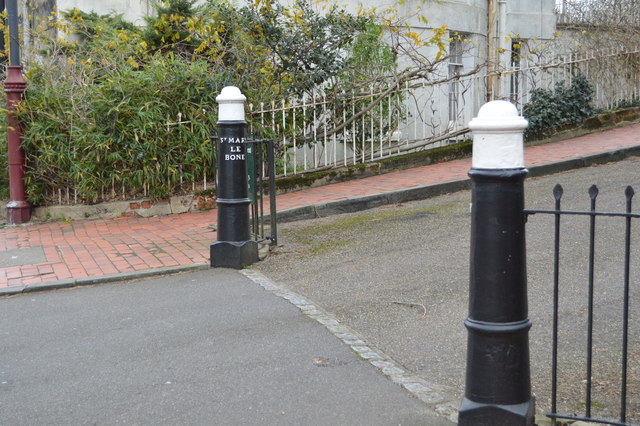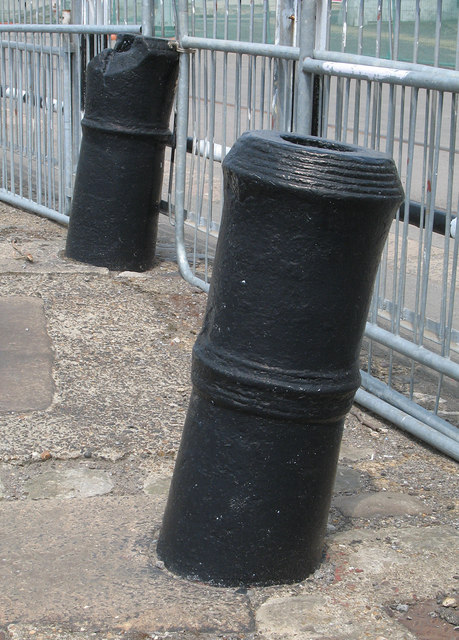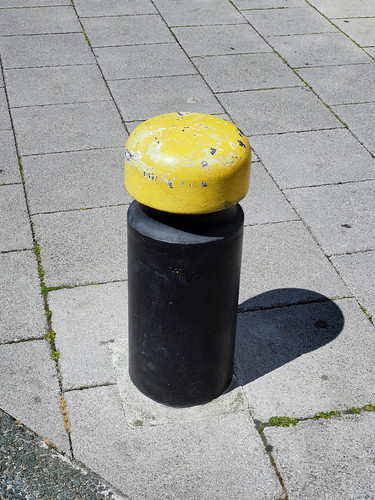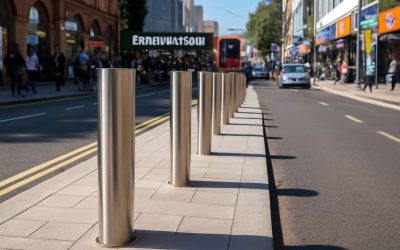Preparation for Installing Bollards in Existing Concrete
Assessing the Installation Site – Evaluating space, load requirements, and safety considerations
When considering how to install bollards in existing concrete, a thorough evaluation of the installation site is paramount. Every space tells a story — whether it’s a bustling urban street, a corporate parking lot, or a pedestrian-friendly plaza. Assessing the available space ensures the bollards not only serve their purpose but also harmonise with their surroundings. It’s essential to measure the width and depth of the designated area, paying close attention to any underground utilities or structural weaknesses that could compromise stability.

Load requirements are equally critical. Different environments demand different levels of impact resistance; a high-traffic area may necessitate industrial-grade bollards capable of withstanding significant force. Safety considerations must also be at the forefront, ensuring that the installation does not obstruct visibility or create hazards. When determining how to install bollards in existing concrete, one must also consider the durability of the concrete and whether it requires reinforcement or preparation to support the bollards securely.
Gathering Necessary Tools and Materials – List of tools (hammer drill, core cutter, etc.) and materials (bollards, anchors, concrete mixer, etc.)
Preparing for the installation of bollards in existing concrete is a pivotal step that often determines the success and longevity of your project. Gathering the right tools and materials is not just about ticking boxes; it’s about setting a solid foundation for a durable and effective barrier. A well-equipped toolkit transforms a potentially daunting task into a manageable process. From precision drilling to secure anchoring, every component plays a vital role.
For this task, you’ll need a selection of specialised tools, including a hammer drill with a masonry bit, a core cutter for precise holes, and a concrete mixer if you’re preparing your own mixture. Additionally, a level, measuring tape, and safety equipment such as gloves and goggles are essential to maintain accuracy and safety during installation.
When it comes to materials, the list is straightforward but critical. You’ll require sturdy bollards, appropriate anchors (such as expansion or chemical anchors), and concrete fasteners. Sometimes, reinforcing the existing concrete with additional support or using specialised epoxy adhesives can enhance stability.
- Impact drills for precise holes
- Bollards made from durable steel or concrete
- Anchors designed for concrete surfaces
The combination of these tools and materials is the cornerstone of effective how to install bollards in existing concrete, ensuring a seamless blend of function and resilience.
Inspecting Existing Concrete Condition – Checking for cracks, stability, and suitability for drilling
Understanding the condition of your existing concrete is a vital step in the process of how to install bollards in existing concrete. Concrete may appear solid and unyielding, but beneath its surface, cracks and instability can lurk—threatening the integrity of your barrier if overlooked. An undetected fault can compromise the entire installation, rendering your safety measures ineffective and potentially dangerous. Meticulous inspection is essential, not just for adherence to best practices, but for peace of mind.
Begin by visually examining the concrete for visible cracks, spalling, or signs of deterioration. These imperfections might seem minor but can indicate deeper structural issues. Stability is another key factor—if the concrete shifts or wobbles under pressure, it’s unsuitable for the installation of bollards. Conducting a thorough assessment ensures that your project rests on a stable foundation. To aid your inspection, consider employing tools like a pry bar or a level, which can reveal hidden weaknesses or uneven surfaces.
When evaluating the concrete’s suitability, remember that some surfaces may require reinforcement before proceeding. This proactive approach can prevent future failures, especially in high-traffic or load-bearing locations. If in doubt, consulting a structural engineer or specialist can provide clarity—because understanding the true condition of your concrete is the bedrock of a successful installation. After all, knowing how to install bollards in existing concrete isn’t just about drilling holes; it’s about respecting the material’s limits and ensuring your barriers serve long-term safety and resilience.
Planning and Marking for Bollard Placement
Determining Optimal Position and Spacing – Guidelines for bollard placement for maximum effectiveness
When contemplating how to install bollards in existing concrete, the significance of meticulous planning and precise marking cannot be overstated. A well-considered layout not only enhances safety but also ensures the longevity and effectiveness of the bollard installation. It’s tempting to jump straight into drilling, but taking the time to identify the optimal position for each bollard can save a great deal of trouble later. This involves understanding the flow of traffic, pedestrian pathways, and potential impact zones, allowing for strategic placement that maximises protection without obstructing access or visibility.
Determining the optimal position and spacing of bollards involves balancing functional requirements with aesthetic considerations. For maximum effectiveness, bollards should be spaced sufficiently to prevent vehicle intrusion without creating unnecessary obstructions. As a rule of thumb, consider the width of the vehicle that the bollards are meant to stop—generally, spacing should be less than the shortest vehicle’s width to ensure adequate protection. In some cases, a combination of guidelines and site-specific factors will influence placement, such as structural constraints or existing landscape features.
Guidelines for bollard placement often recommend an ordered approach:
- Measure the intended area thoroughly, ensuring accurate dimensions.
- Mark the locations with durable chalk or spray paint, respecting the recommended spacing standards.
- Double-check clearances from utilities, doorways, and other fixed structures before finalising positions.
This deliberate process underscores how vital it is to plan carefully—especially when considering how to install bollards in existing concrete—so that each bollard performs its role flawlessly in safeguarding spaces and people alike.
Measuring and Marking Drilling Points – Using chalk, tape measures, and templates for accuracy
When it comes to learning how to install bollards in existing concrete, precision is king—and a little bit of finesse. Before you grab that hammer drill, take a moment to map out your masterpiece. Accurate measuring and marking are the unsung heroes of a successful bollard installation, transforming chaos into a carefully choreographed dance. Trust me, a few minutes with a tape measure and some chalk can save hours of frustration later.
Start by marking the exact locations with durable chalk or spray paint—think of it as laying down your traffic choreography. For added accuracy, use a template or a straightedge to ensure your markings are straight and true. Remember, the key is to keep things neat; messy marks can lead to crooked bollards or, worse, drilling into utilities or structural elements. To make sure your markings stick around, double-check the distances and clearances from nearby utilities, doorways, and fixed features.
For pinpoint accuracy, some professionals prefer a simple numbered approach:
- Measure the designated area thoroughly, noting any irregularities or obstacles.
- Use a tape measure to determine the exact spacing based on the bollards’ role—whether for safety, aesthetics, or a bit of both.
- Mark each point with chalk, ensuring they’re aligned in a straight line or pattern as per your plan.
And don’t forget: using a straightedge or a specialised template can eliminate the risk of wonky holes—because no one wants a leaning bollard! When you’ve marked out your layout with care, you’ll be well-equipped to drill with confidence, knowing each point is perfectly positioned for stability and effectiveness. Learning how to install bollards in existing concrete isn’t just about brute force; it’s about precision, patience, and a dash of artistry in marking your territory.
Preparing the Concrete Surface
Cleaning the Area – Removing debris, dirt, and loose material
Before embarking on the intricate process of how to install bollards in existing concrete, the foundation must be pristine and prepared with care. A thorough cleaning of the area ensures that every subsequent step is rooted in a surface free of debris, dirt, and loose material. Over time, dust and grime can create a barrier that compromises the integrity of anchoring and stability. Sweeping away loose particles with a stiff brush or broom is a simple yet vital task, revealing the true texture of the concrete beneath.
Next, a detailed inspection reveals any cracks or uneven patches that could interfere with the installation process. These imperfections need to be addressed beforehand, either by filling cracks with suitable concrete repair compounds or considering the overall stability of the surface. Once the concrete surface is clean and sound, the area can be meticulously marked, ensuring that the bollards will sit precisely where intended. Proper preparation is the cornerstone of a seamless installation, transforming a mundane slab into a resilient barrier that embodies both function and finesse.
Marking Drilling Spots – Double-checking alignment and markers before drilling
Before you plunge into the drilling frenzy, it’s imperative to double-check your markings—precision is the heartbeat of a successful bollard installation. This step ensures that each bollard aligns perfectly with your original plan, avoiding the chaos of misplacement that can turn a sleek barrier into an eyesore. Take a moment to verify the markings with a tape measure and a spirit level; a crooked bollard is as appealing as a crooked smile at a formal dinner.
Once satisfied, carefully scrutinise the marked spots to confirm they’re free from cracks or compromised concrete—these imperfections can undermine the stability of your bollards. To avoid any unwelcome surprises, consider using a marker or chalk to outline the drilling points once you’re confident of their accuracy. For added assurance, some professionals prefer to use a template or guide, especially when installing multiple bollards, ensuring uniformity and aesthetic harmony across the installation site.

With your markings validated, it’s time to prepare for the actual drilling process. Remember, how to install bollards in existing concrete hinges on meticulous preparation and an eagle eye for detail—every measurement and mark must be spot-on before the first drill bit touches the surface. After all, a well-marked and double-checked foundation sets the stage for a resilient and visually pleasing barrier, transforming a mundane slab into a fortress of function and finesse.
Optional Surface Treatment – Applying a primer or sealant if necessary for better adhesion
When contemplating how to install bollards in existing concrete, attention to surface preparation can be the subtle art that transforms a functional installation into a visual symphony. Applying a primer or sealant might seem like an optional step, but it plays a pivotal role in ensuring the longevity and stability of your bollards. A well-chosen primer enhances adhesion, especially when the concrete’s surface has been exposed to the elements or has a textured finish. Sealants, on the other hand, can act as a barrier against moisture ingress, safeguarding the integrity of the installation over time.
If the concrete surface appears porous or weathered, consider treating it with a specialised surface primer designed for dense or compromised substrates. This creates a bonding layer that allows the anchor bolts and bollard bases to embed more securely. For surfaces that are smoother or have been previously sealed, a light abrasive clean or etching may be necessary to open up the pores – making the primer’s job easier and more effective. Remember, meticulous surface preparation isn’t just about ease; it’s about creating a foundation capable of resisting the stresses inflicted by daily use and environmental wear.
In some cases, surface treatment is a matter of choice. For instance, using a sealant can also improve the appearance by giving a subtle sheen or colour enhancement, blending the bollards seamlessly into their surroundings. Whether opting for primer, sealant, or both, these surface treatments act as an invisible layer of protection, elevating your project from ordinary to extraordinary. And when executed with care, they ultimately make the difference in how to install bollards in existing concrete that stands resilient and proud for years to come.
Drilling Into Existing Concrete
Selecting the Right Drill and Bit – Using a concrete drill and appropriate-sized core or masonry bits
When embarking upon the journey of how to install bollards in existing concrete, selecting the appropriate drilling tool is paramount. The right drill transforms a daunting task into a precise dance of power and control. A sturdy concrete drill—preferably a hammer drill—equipped with a suitable-sized core or masonry bit, becomes your trusted partner in this endeavour. The core bit, with its robust carbide tip, slices through the hardened surface like a hot knife through butter, ensuring a clean and accurate hole for your bollard anchors.
Choosing the correct bit size is a nuanced art. Too small, and the anchor may not fit snugly; too large, and the integrity of the existing concrete could be compromised. As you prepare to drill, remember that the depth of the hole must accommodate the length of your anchors and the base of the bollard itself. The process becomes a symphony of measurement, patience, and precision, where each element harmonises to create a secure foundation for your bollards.
To streamline your efforts, consider these essentials:
- Use a high-quality hammer drill for optimal power and stability.
- Select a masonry or core cutter bit matching the diameter of your anchors.
- Maintain steady pressure to prevent bit wandering and ensure a perpendicular hole.
- Regularly cool the bit with water to prolong its lifespan and improve cutting efficiency.
As you forge ahead in your quest on how to install bollards in existing concrete, remember that meticulous preparation—starting with the right drill and bit—sets the stage for a resilient and enduring installation. The right tools, wielded with care and precision, will turn your vision into a concrete reality.
Drilling Process – Step-by-step guide to safely drill holes without damaging concrete
Drilling into existing concrete is an art that demands both patience and precision. As you prepare to embed bollards securely, the process becomes almost poetic—a dance of controlled power and finesse. To ensure a flawless outcome, start by setting your drill to its highest potential, preferably a hammer drill that can tame the toughest surfaces with ease. Keep a steady hand and apply gentle, consistent pressure, guiding the drill bit into the concrete as if threading a needle through a tapestry of stone.
Remember, the key to mastering how to install bollards in existing concrete lies in the details. Regularly cool the drill bit with water—this simple act preserves its sharpness and prevents overheating, turning a potentially arduous task into a smooth symphony of effort. As you approach your marked drilling points, consider the following steps:
- Double-check your measurements to ensure perfect alignment.
- Maintain a perpendicular stance to produce a clean, accurate hole.
- Pause periodically to clear debris and inspect your progress, ensuring the integrity of the surrounding concrete remains intact.
Patience, a steady hand, and the right tools—these are the silent magicians behind a successful installation of bollards in existing concrete. With each carefully drilled hole, your vision of a protected space begins to take shape, as if conjured from the very essence of solid ground.
Handling Reinforced Concrete – Special techniques if rebar is encountered
When drilling into reinforced concrete, encountering rebar is an inevitability—yet it shouldn’t cause alarm. Instead, it calls for special techniques to ensure the integrity of the concrete remains intact while allowing the bollard installation to proceed smoothly.
A common approach is to use a core drill equipped with a diamond-tipped bit, which can cut through both concrete and rebar without causing damage. When you hit rebar, avoid forcing the drill, as this risks cracking or chipping the surrounding material. Instead, carefully pause and switch to a rebar cutter or an oscillating tool designed to cut through steel reinforcement.
If you find rebar obstructing your drilling path, consider these steps:
- Mark the location precisely, avoiding the rebar’s position if possible.
- Use a rebar detector beforehand to map out the reinforcement layout accurately.
- Adjust your drilling trajectory slightly to bypass the steel reinforcement without compromising the bollard’s stability.
Patience and precision are paramount in this process, especially when learning how to install bollards in existing concrete. Handling reinforced concrete with care ensures your project remains structurally sound, and the bollards will serve their purpose for years to come.
Installing Bollards in Existing Concrete
Inserting Anchors or Fixings – Types of anchors suitable for concrete and instructions for installation
When it comes to reinforcing security or guiding traffic flow, knowing how to install bollards in existing concrete is essential. One of the most critical steps involves inserting the right type of anchors or fixings, which provide a robust foundation for the bollards. Choosing suitable anchors—such as expansion bolts, chemical anchors, or sleeve anchors—can make all the difference in durability and stability. Each type offers unique advantages depending on the concrete’s condition and the load it must bear.
Before drilling, it’s vital to prepare the surface thoroughly. Ensure the area is clean, free of dust or loose debris, and properly marked for precision. When selecting anchors, consider the weight and impact the bollards will face; heavier or high-traffic bollards demand stronger fixings. For example, heavy-duty expansion anchors are ideal for securing bollards in high-stress environments, offering maximum hold and resistance to shear forces. Proper installation techniques, including drilling to the correct depth and diameter, are fundamental to achieving a secure fit. Using a high-quality drill and masonry bit aligned with the chosen anchor’s specifications ensures a professional, long-lasting installation that withstands the test of time and traffic.
Positioning the Bollards – Ensuring correct alignment before fixing in place
Positioning bollards in existing concrete isn’t merely a matter of eyeing the spot and digging in—precision is paramount. An impeccable alignment ensures not only visual harmony but functional efficacy, especially when guiding traffic or reinforcing security. Before fixing in place, take a moment to double-check your measurements; a crooked bollard is an eyesore and a hazard in disguise.
To achieve this, employ a combination of chalk lines and spirit levels, ensuring your bollards sit perfectly upright and evenly spaced. For added accuracy, consider using a template or a pre-marked jig, which can significantly streamline the process. Remember, a well-positioned bollard can be the difference between a seamless pedestrian flow and chaos in the making.
Once the placement is verified, mark the drilling points with care, ensuring they align with your chosen anchors and the design plan. The meticulousness invested at this stage guarantees that the installation of bollards in existing concrete will stand the test of time and traffic—all while maintaining a polished, professional appearance.
Securing the Bollards – Applying grout or adhesive as needed for stability
Securing bollards in existing concrete isn’t just about drilling holes and shoving in anchors; it’s a meticulous dance that demands precision. Applying the right grout or adhesive is the secret sauce that transforms a basic installation into a fortress of stability. When done correctly, this step ensures that your bollards can withstand the relentless forces of traffic, weather, and time itself.
For optimal results, select a high-quality epoxy or specialised concrete adhesive designed for outdoor applications. Once the holes are drilled, pour or inject the grout into the anchor points, then carefully set the bollards into position. To guarantee a firm bond, double-check the alignment once more—misaligned bollards can compromise both safety and aesthetics. Remember, the strength of your installation hinges on this stage, making it vital to follow manufacturer instructions precisely.
Some professionals recommend using a combination of grout and mechanical fixings to enhance stability, especially in high-traffic areas. This dual approach not only reinforces the integrity of the bollards but also prolongs their lifespan, ensuring they remain a steadfast barrier for years to come.
Final Adjustments and Checks – Verifying verticality, security, and overall appearance
Final adjustments are critical to ensure your bollards are both secure and visually aligned. Once the bollards are set and the grout or adhesive has cured, it’s time to verify their verticality. Use a spirit level or a plumb line to check that each bollard stands perfectly upright. Misaligned bollards can pose safety risks and mar the overall look of your installation.
Next, inspect the security of each bollard. Gently shake them to confirm they’re firmly anchored and haven’t shifted during curing. A stable bollard will resist movement and maintain its position under pressure. Take a moment to evaluate the overall appearance, ensuring each bollard is flush with the surface and evenly spaced. This step is essential in how to install bollards in existing concrete, as visual consistency enhances both safety standards and aesthetic appeal.
If necessary, make small adjustments before the grout fully sets. For added durability, some professionals recommend applying a surface sealant or paint after installation, further protecting the bollards from weather and wear. Double-checking these final details guarantees a professional finish that will endure the test of time.
Finishing Touches and Maintenance
Sealing and Protecting the Bollards – Applying protective finishes or coatings
Once the bollards are securely anchored, the journey to longevity truly begins. Finishing touches and maintenance are the final brushstrokes on a masterpiece of installation. Applying sealing and protective coatings not only enhances the aesthetic appeal but also shields the bollards from the harsh elements—rain, frost, and the relentless sun. A high-quality sealant acts as a barrier, preventing moisture ingress and corrosion, especially vital when learning how to install bollards in existing concrete that has seen years of wear and tear.
For optimal protection, consider using specialised concrete sealers that penetrate deep into the surface, creating a resilient shield. Regular maintenance involves inspecting the coatings for signs of deterioration and reapplying as needed. This proactive approach ensures the bollards retain their integrity and visual appeal for decades. Remember, a well-maintained bollard isn’t just functional; it’s a statement of durability and craftsmanship, reinforcing safety and aesthetic harmony in your space.
Cleaning Up the Site – Disposing of debris and excess materials
Once your bollards are firmly anchored, attention shifts to the finishing touches that will determine their longevity and visual appeal. Proper maintenance begins with cleaning up the site — removing any leftover debris, excess concrete, or packaging materials. This step not only leaves the area tidy but also ensures that no obstructions interfere with ongoing inspections or future maintenance routines.
Disposing of waste responsibly is essential. Recycle packaging and unused materials where possible, and ensure that sharp or heavy debris is handled with care to prevent injuries or damage. A neat site reflects a professional installation and makes ongoing upkeep easier, helping to preserve the integrity of your bollards over time.
In some cases, applying a surface treatment such as a sealant or primer can further protect your bollards and the surrounding concrete. These coatings act as a barrier against moisture ingress and environmental wear, prolonging the life of the installation. Regular inspections are recommended to catch signs of deterioration early — cracks, chips, or discolouration can all be indicators that maintenance is due.
For those wondering how to install bollards in existing concrete, paying close attention to post-installation care is crucial. A well-maintained bollard not only enhances safety but also embodies durability and craftsmanship. Keeping the area clean and protected ensures that your investment stands the test of time, serving its purpose reliably for years to come.
Regular Inspection and Maintenance – Tips for ensuring long-term durability and safety
When the last bolt is tightened and the bollards stand proudly in place, the journey isn’t over—it’s merely entering a new phase of care and refinement. The finishing touches breathe life into your installation, ensuring it remains both functional and visually striking for years to come. Attention to detail at this stage embodies craftsmanship, transforming a routine task into an art form.
Regular inspection is the cornerstone of long-term durability. A vigilant eye can catch early signs of wear—fading paint, minor chips, or hairline cracks—before they develop into costly repairs. Periodic cleaning and surface treatments, such as applying a sealant or protective coating, act as guardians against moisture ingress and environmental assault. These measures preserve the integrity of the concrete and bollards, extending their service life remarkably.

To maintain optimal safety and appearance, consider implementing a simple maintenance routine. For example, an annual check of bollard alignment and stability can prevent accidents, while reapplying sealant every few years ensures the protective barrier remains intact. Remember, ensuring that your bollards in existing concrete are properly cared for is not just about prolonging their lifespan—it’s about safeguarding the spaces they serve and the people who use them.
Safety and Best Practice Tips
Personal Protective Equipment – Wearing appropriate safety gear during installation
Safety during the installation of bollards in existing concrete is paramount, not only to protect workers but also to ensure the longevity of your project. Personal protective equipment (PPE) acts as a vital barrier against potential hazards. Wearing durable gloves, eye protection, and sturdy footwear can prevent injuries from flying debris or accidental slips. It’s tempting to rush through the process, but patience and proper safety gear make all the difference.
When handling tools such as a hammer drill or core cutter, it’s wise to adopt best practice tips for safety. For instance, always inspect your PPE before use, and don respiratory masks if dust levels are high. Remember, a moment spent securing your safety gear can save hours of setbacks caused by injury.
- Wear safety goggles to shield your eyes from concrete dust
- Use ear protection when operating loud machinery
- Ensure gloves are snug but flexible for precise control
By prioritising safety and following these best practice tips, you can confidently proceed with how to install bollards in existing concrete, turning a complex task into a seamless process.
Working with Reinforced Concrete – Precautions to avoid cracks or structural compromise
Working with reinforced concrete demands both precision and respect for its complex anatomy. Cracks, if overlooked, can silently undermine the integrity of your installation, leading to costly repairs or dangerous failures. When learning how to install bollards in existing concrete, one must pay close attention to the structural nuances of the substrate. Reinforced concrete, with its embedded rebar, resists drilling but also invites the risk of unintentional damage if approached recklessly.
Safety isn’t merely a matter of personal protection; it’s a strategic element that safeguards the project’s success. To avoid cracks or structural compromise, consider these precautions:
- Use specialised drill bits designed for reinforced concrete to minimise stress on rebar.
- Apply low-speed drilling techniques to reduce vibration and heat buildup, which can cause microcracks.
- Utilise rebar locators before commencing to identify rebar positions, preventing accidental cutting or bending.
Patience becomes an unspoken virtue during this process. Rushing through drilling or neglecting to double-check measurements invites unintended damage, risking both safety and stability. When executed with meticulous care, understanding how to install bollards in existing concrete transforms from a daunting task into a precise act of engineering integrity. Only then can the bollards stand resilient, anchoring purpose with enduring strength and safety.
Legal and Building Regulations – Ensuring compliance with local codes
Legal compliance isn’t just an afterthought; it’s the cornerstone of any successful bollard installation project. Ensuring adherence to local building regulations and safety standards transforms a routine task into a testament to responsible craftsmanship. When learning how to install bollards in existing concrete, understanding the legal landscape helps prevent costly penalties and structural mishaps. Regulations often specify minimum spacing, load capacities, and anchoring methods, all designed to safeguard pedestrians and property alike.
To streamline compliance, consult your local authority’s building codes before beginning. Some regions mandate specific materials or installation procedures, especially when working with reinforced concrete. A seamless integration of legal and safety considerations not only ensures durability but also elevates your project’s credibility. Remember: thorough documentation and adherence to these standards are as vital as the physical installation itself. After all, a beautiful bollard is only as strong as the legislation that underpins its foundation.
For best practice in this endeavour, consider these key points:
- Review local building regulations to determine required load-bearing capacities and spacing guidelines.
- Secure necessary permits prior to commencing work, avoiding legal complications.
- Utilise certified materials and adhere to manufacturer instructions for anchors and fixings.
By weaving these regulatory elements into your project, your expertise in how to install bollards in existing concrete becomes not just a technical skill but a mark of professional integrity and safety consciousness. The elegance of a well-executed installation is ultimately rooted in compliance, ensuring resilience and peace of mind for years to come.



0 Comments